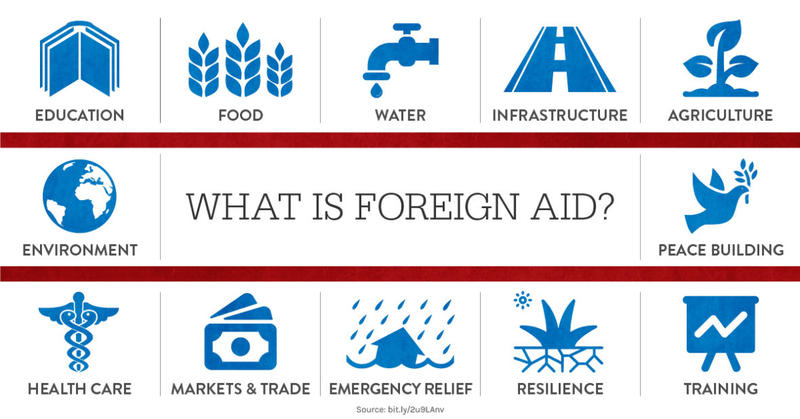
Paola Cervo
Innovation and technology are increasingly recognised as powerful drivers of sustainable and inclusive development. The socio-economic benefits produced worldwide by increased investments demonstrate that innovation-driven growth is no longer an exclusive prerogative of high-income countries.
At the same time, the ongoing discourse on innovation for development shows how innovations from the global North do not always satisfy the requirements of the global South, and that innovation in the South takes place not only through knowledge and technological transfer.
If we look at the last three decades, the global landscape of innovation, science and technology has undergone important changes. Global R&D expenditure has continued to rise, more than doubling between 1996 and 2017. The geography of innovation includes more than ever developing economies: Africa emerges in terms of innovation relative to the level of development with top performers such as Kenya, Rwanda, and Mozambique.
Even though internet access remains prohibitively expensive for many, coverage of mobile-cellular signals and mobile-broadband Internet has expanded rapidly, now reaching almost the entire global population. In the last decade, the number of researchers has risen by 21%; African scientists have more than trebled their production of research papers.
The scientific world is becoming increasingly interconnected, with international collaboration on the rise. The number of active technology hubs across the African continent has grown steadily since 2016, with no signs of slowing down. Tech entrepreneurs are becoming veritable game-changers in devising solutions adapted to local contexts and producing social value.
Philanthropic and aid agencies recently turned their attention to innovation as a potentially strategic sector alongside the more traditional strategies of international cooperation. The number of initiatives aiming at supporting innovation in developing countries has soared over the last few years. International development banks, foundations, European institutions and development agencies are supporting initiatives targeting different stakeholders with a combination of tools crossing the lines between philanthropy, development aid, and private sector development.
Yet, while data and practices are encouraging, most innovation still takes place in a few countries and most technologies are initially developed in and for more advanced countries. Some challenges are specific to developing contexts: the benefits of technological innovation are still not shared with large segments of society; infrastructure is poor; innovation has so far been shaped mainly by partnerships that have not promoted ownership, accountability and sustainability.
At the same time, similarly to many other countries across the world, developing countries still struggle to: bring innovations to market; create effective interactions among key actors, both from the formal and the informal sector, such as intermediaries, technology transfer offices but also grassroots innovators, and indigenous knowledge-holders; involve the private sector, foundations, civil society, and local authorities in the innovation efforts.
Foreign aid and public funding, as well as philanthropic capital, can play a particularly critical role to unlock the potential of innovation for development and generate sustainable impacts through a non-prescriptive, systemic and inclusive approach. Years of experience in working with researchers and innovators in developing countries have evidenced at least three work streams where international aid can add value.
• An inclusive enabling environment prompting new forms of collaborations
A focus on building integrated, multi-stakeholder ecosystems can generate more sustainable results than single-handed initiatives led by governments, the private sector or academia. Multi-disciplinary, multi-stakeholder and participatory approaches respond more effectively to local contexts and needs. Traditional research cooperation projects also evidenced the challenge in translating knowledge and results into policy changes, as well as the constraints for innovation to emerge where the regulatory framework does not encourage an entrepreneurial mind-set. International donors can leverage both their funding and influence to support initiatives inducing change at interlocking levels: capacity of innovation stakeholders, knowledge transfer, network building, and policy development. Innovation initiatives that evolve in synergy with policies may be more successful in bringing about actual development results and enhance their sustainability.
• Rethinking how (social) value is defined, incentivised and measured
In the specific cultural context of most development countries, the cycle of innovation does not perfectly match the venture capital model, which traditionally supports innovators in advanced economies. Moreover, innovations that aim at addressing the most pressing societal problems – as poverty, unemployment or the impact of climate change – do not necessarily achieve results that can be measured through traditional business indicators. Supporting innovation for development requires accepting that a high growth potential might not always translate in actual growth (i.e. traditionally measured in number of employees, annual revenue, etc.). In turn, this implies rethinking how innovation is incentivised in such contexts. While maintaining the appropriate levels of accountability, aid funding could accept higher levels of uncertainty and risk, adapt to the longer timeframe needed to strengthen the capacity to compete in the ecosystem, give more value to experimentation and social outcomes.
• Acknowledging the differing levels of innovation readiness and adapting approaches to contexts
All developing countries are engaging in innovation despite important differences in the levels and outcomes of investment. Aid agencies can promote a tailor-made approach, which takes into account the idiosyncrasies of national innovation eco-systems, and hence prove more effective in unlocking the potential of innovation actors.
If resources are available to all countries, and not only to “innovation achievers”, benefits may spread more easily through regional and continental networks, and the risk of increasing gaps between countries and communities might be mitigated. In practice, this requires more flexible funding mechanisms, which can be adapted to the needs of innovation communities; earmarking resources for those countries that are still less visible on the global innovation map; fostering collaboration and knowledge sharing across borders on mutually-agreed terms; promoting the role that social innovation approaches can play in defining development trajectories that are unique to the context and aspirations of the target populations.
Paola Cervo is an International Development Expert at the European Commission










